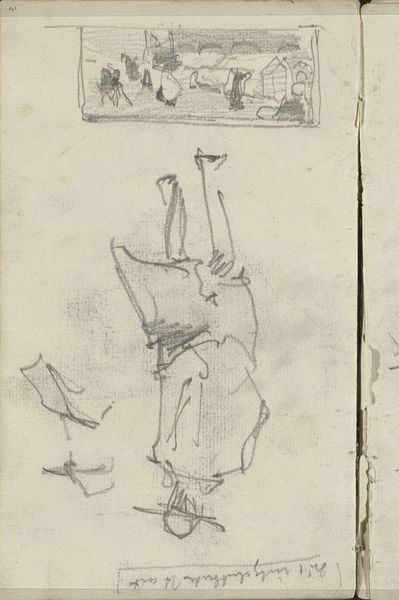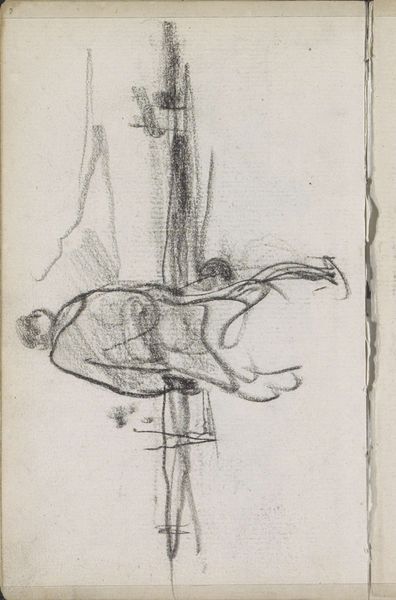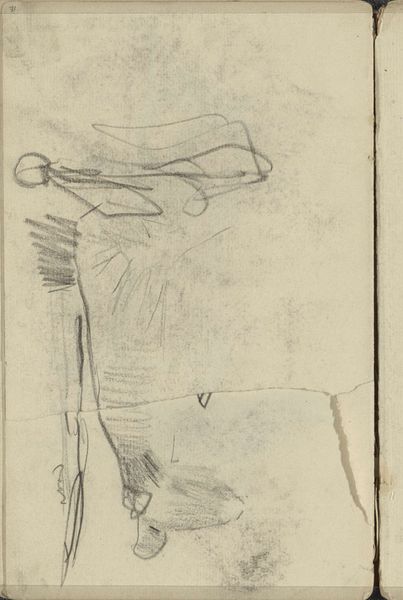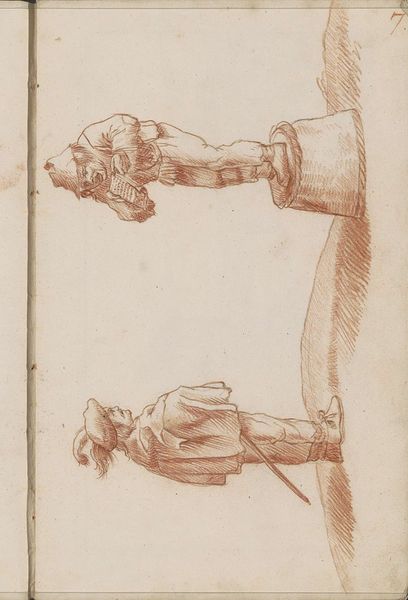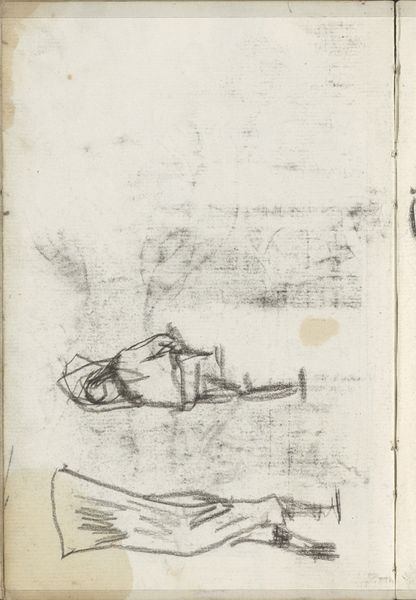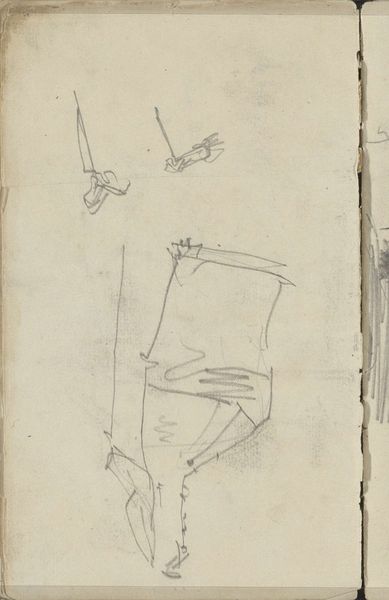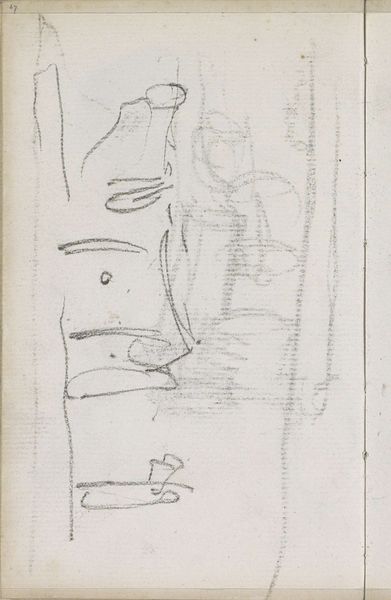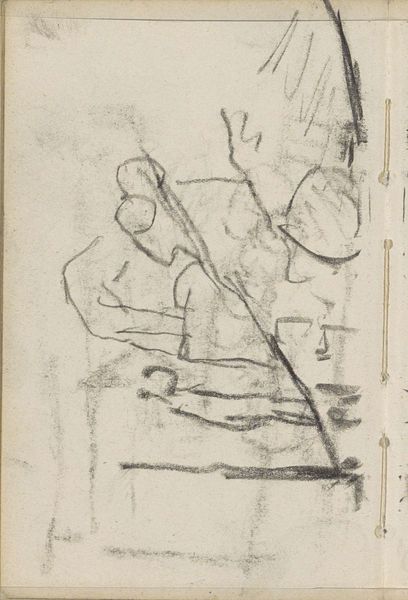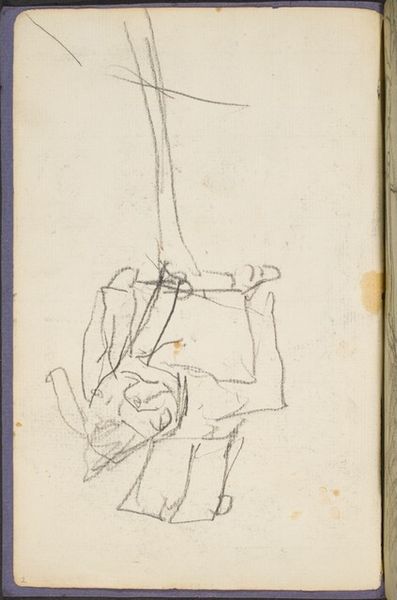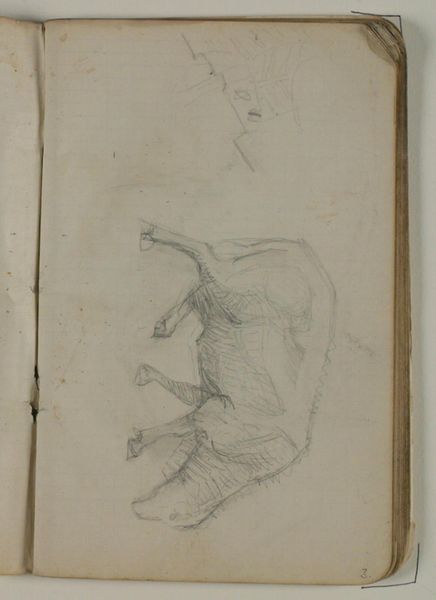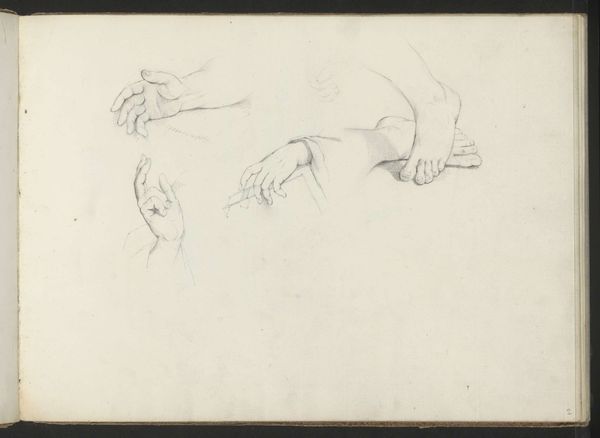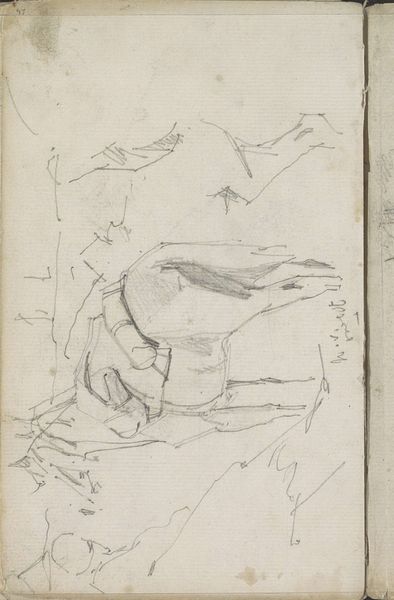
drawing, pencil
#
drawing
#
impressionism
#
pencil sketch
#
figuration
#
pencil
Copyright: Rijks Museum: Open Domain
Curator: Breitner’s “Figuurstudies,” created between 1884 and 1886, greets us today, rendered in pencil on paper. The piece resides here at the Rijksmuseum. What are your first thoughts? Editor: It feels… provisional. The rapidly sketched lines and the ambiguous forms speak to an artist grappling with fleeting moments, more interested in the essence of form than precise representation. There’s a definite energy, even tension in the strokes. Curator: Indeed, there’s a raw immediacy. These aren't polished portraits; rather, they seem like preliminary investigations into human form, typical of academic study. The ambiguity actually gives space for interpretation. The human figure represented almost symbolically hints to something larger, some deep meaning behind its lines, even though unfinished. Editor: Precisely! It's this unresolved state that draws me in. Note how the pencil lines almost seem to struggle to define the forms. They are not crisp or definitive. The interplay of light and shadow feels almost accidental. I wouldn’t call it beauty, yet there is truthfulness here. Curator: Well said. This captures an immediacy—of life observed in motion and interpreted through the artistic psyche, though its impressionistic leaning could mean there is neither objective “truth” nor beauty to chase. It also points to a shift in seeing the purpose and direction of academic study itself. These figure studies would hardly represent classical or conventional portrayals; it has clearly undergone the eye and sensibility of the impressionist turn. Editor: Absolutely. We glimpse the birth of modern seeing—the emphasis on capturing the subjective experience, rather than reproducing some external “reality.” This drawing, even in its brevity, represents the liberation that Impressionism heralded for artists in the late 19th century. Curator: Looking closely allows us to consider the act of studying: Breitner looking intently and sketching swiftly as he observed modern urban figures, not archetypes nor idealized notions. Editor: I agree, and these glimpses remind us that the artistic process, like life itself, is not always neat or resolved but is in constant process. Curator: Indeed. These fleeting moments provide fertile grounds to connect not only form, but the human project of interpreting existence itself. Editor: Yes. A powerful reminder that often the most profound insights emerge from those unresolved spaces between intent and form.
Comments
No comments
Be the first to comment and join the conversation on the ultimate creative platform.
